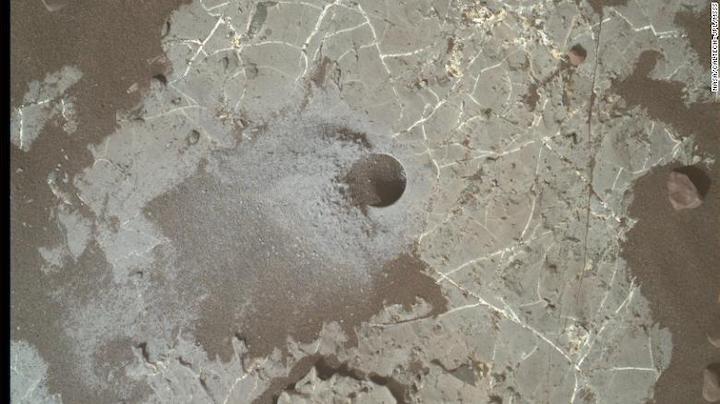For a closer look, the rover drilled to collect samples of sediment across the crater between August 2012 and July 2021. Curiosity then heated these 24 powder samples to around 1,562 degrees Fahrenheit (850 degrees Celsius) in order to separate elements. This caused the samples to release methane, which was then analyzed by another instrument in the rover's arsenal to show the presence of stable carbon isotopes, or carbon atoms.
Some of the samples were depleted in carbon while others were enriched. Carbon has two stable isotopes, measured as either carbon 12 or carbon 13.
"The samples extremely depleted in carbon 13 are a little like samples from Australia taken from sediment that was 2.7 billion years old," said Christopher H. House, lead study author and professor of geosciences at Pennsylvania State University, in a statement.
"Those samples were caused by biological activity when methane was consumed by ancient microbial mats, but we can't necessarily say that on Mars because it's a planet that may have formed out of different materials and processes than Earth."
In lakes on Earth, microbes like to grow in big colonies that essentially form mats just under the surface of the water.
3 possible carbon origins
The varied measurements of these carbon atoms could suggest three very different things about ancient Mars. The origin of the carbon is likely due to cosmic dust, ultraviolet degradation of carbon dioxide, or the ultraviolet degradation of biologically produced methane.
"All three of these scenarios are unconventional, unlike processes common on Earth," according to the researchers.
The first scenario involves our entire solar system passing through a galactic dust cloud, something that occurs every 100 million years, according to House. The particle-heavy cloud could trigger cooling events on rocky planets.
"It doesn't deposit a lot of dust," House said. "It is hard to see any of these deposition events in the Earth record."
But it's possible that during an event like this, the cosmic dust cloud would have lowered temperatures on ancient Mars, which may have had liquid water. This could have caused glaciers to form on Mars, leaving a layer of dust on top of the ice. When the ice melted, the layer of sediment including carbon would have remained. While it's entirely possible, there is little evidence for glaciers in Gale Crater and the study authors said it would require further research.
The second scenario involves the conversion of carbon dioxide on Mars into organic compounds, such as formaldehyde, due to ultraviolet radiation. That hypothesis also requires additional research.
The third way this carbon was produced has possible biological roots.
If this kind of depleted carbon measurement was made on Earth, it would show that microbes were consuming biologically produced methane. While
Curiosity has previously detected methane on Mars, researchers can only guess if there were once large plumes of methane being released from beneath the surface of Mars. If this was the case and there were microbes on the Martian surface, they would have consumed this methane.
It's also possible that the methane interacted with ultraviolet light, leaving a trace of carbon on the Martian surface.
More drilling on the horizon
The Curiosity rover will be returning to the site where it collected the majority of the samples in about a month, which will allow for another chance to analyze sediment from this intriguing location.
"This research accomplished a long-standing goal for Mars exploration," House said. "To measure different carbon isotopes -- one of the most important geology tools -- from sediment on another habitable world, and it does so by looking at nine years of exploration."
Quelle: CNN


